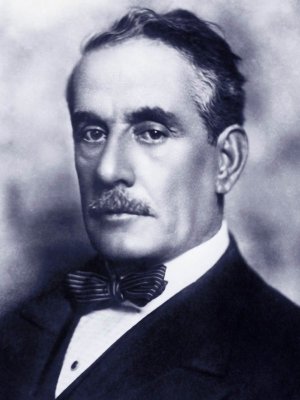World History
Sunday, December 23, 1888. : Dutch painter Vincent van Gogh deliberately cuts off his own ear.
Vincent Willem van Gogh was born on 30 March 1853 in Zundert, in the southern Netherlands. Generally considered (posthumously) one of the greatest and most prolific painters in European history, he suffered a mental breakdown after only ten years working as an artist.
The story goes that on the evening of 23 December 1888, Van Gogh cut off the lower half of his left ear and took it to a brothel, where he presented it to a prostitute friend. The reason for this unusual behaviour has been theorised upon by many; the most likely cause was that it was the result of an argument with his painter friend Paul Gauguin, although that does not explain his bizarre behaviour. Regardless of the reason, shortly after this incident, van Gogh admitted himself to a mental institution. Two years later, suffering from severe depression, Van Gogh shot himself in the chest and died two days later, on 29 July, 1890.
Wednesday, December 23, 1970. : Construction of the World Trade Center (Twin Towers) in New York reaches its highest point.
The World Trade Center in New York City was a complex of seven buildings, designed by American architect Minoru Yamasaki, near the south end of Manhattan in the financial district. The World Trade Center was dominated by the Twin Towers. Tower One, the North Tower, featured a huge antenna and stood 417 m high, while Tower Two, the South Tower, was 415 m high and contained the observation deck which gave a view extending over 70km. On 23 December 1970, construction of the Twin Towers reached its highest point. The towers were completed in 1972 and 1973 and at the time were the tallest buildings on Earth. Within a few years, however, Chicago's Sears Tower at a height of 442m surpassed the record held by the Twin Towers.
On 11 September 2001, the Twin Towers were destroyed when two planes hijacked by terrorists crashed into the towers. Thousands were killed in the resultant fires and collapse of the once-proud buildings.
 Saturday, December 23, 1972. : Between 5,000 and 10,000 are killed as an earthquake hits Nicaragua.
Saturday, December 23, 1972. : Between 5,000 and 10,000 are killed as an earthquake hits Nicaragua.
The country of Nicaragua lies in Central America. It is bordered on the north by Honduras, on the south by Costa Rica, on the west by the Pacific Ocean, and on the east side by the Caribbean Sea. The capital city, Managua, and the two largest cities, Leon and Granada, lie in the Pacific lowlands where volcanic eruptions and earthquakes are common.
At 12:45 pm local time on 23 December 1972, Managua was devastated by an earthquake measuring 6.5 on the Richter scale. Water, electricity and communications were cut immediately as up to 80% of buildings collapsed. While over two dozen countries responded with aid worth millions, much of it never reached those in need: the overwhelming devastation meant the aid was not distributed properly and began being stockpiled. Exact figures for the death toll have never been determined, but in the end, it is estimated to have been between 5,000 and 10,000.
Thursday, December 23, 1993. : Plans to destroy the remaining smallpox virus stockpile are reversed.
Smallpox is the only known major human disease to have been eradicated. It was a highly contagious viral disease unique to humans, caused by two virus variants called Variola major and Variola minor. V. major was the more deadly form, with a typical mortality of 20-40 percent of those infected. The other type, V. minor, only killed 1% of its victims. Smallpox was responsible for an estimated 300-500 million deaths in the 20th century. Survivors were left blind in one or both eyes from corneal ulcerations, and left with persistent skin scarring, or pockmarks.
In January 1967, the World Health Organisation (WHO), a specialised agency of the United Nations acting as a coordinating authority on international public health, announced the Intensified Smallpox Eradication Programme, involving the extensive distribution of the vaccine. In July 1978, WHO announced the successful eradication of the smallpox strain Variola Minor. The last natural case of the more deadly strain, Variola Major, had occurred several years earlier, in 1975.
Although the disease was eradicated from the general populace, there remained a stockpile of the virus in storage in 600 frozen vials in Atlanta and Russia. This was deemed necessary, should further vaccines be required in the future. This stockpile was supposed to be destroyed on 31 December 1993. However, just prior to this date, on 23 December 1993, the U.S. Centers for Disease Control, Atlanta, Georgia reversed their decision, announcing that the remaining virus stockpile would not be destroyed, to enable scientists to continue studying the disease.





